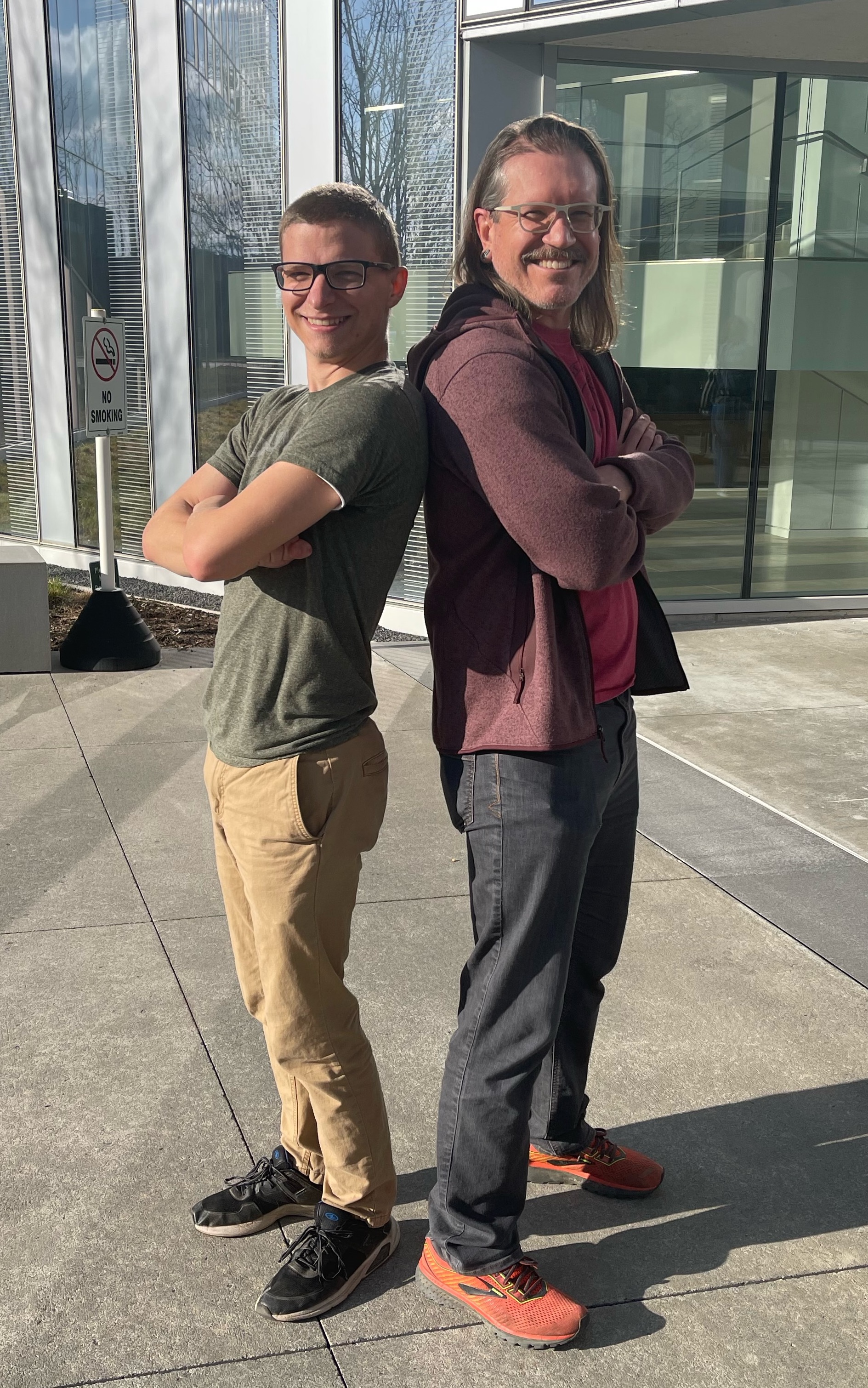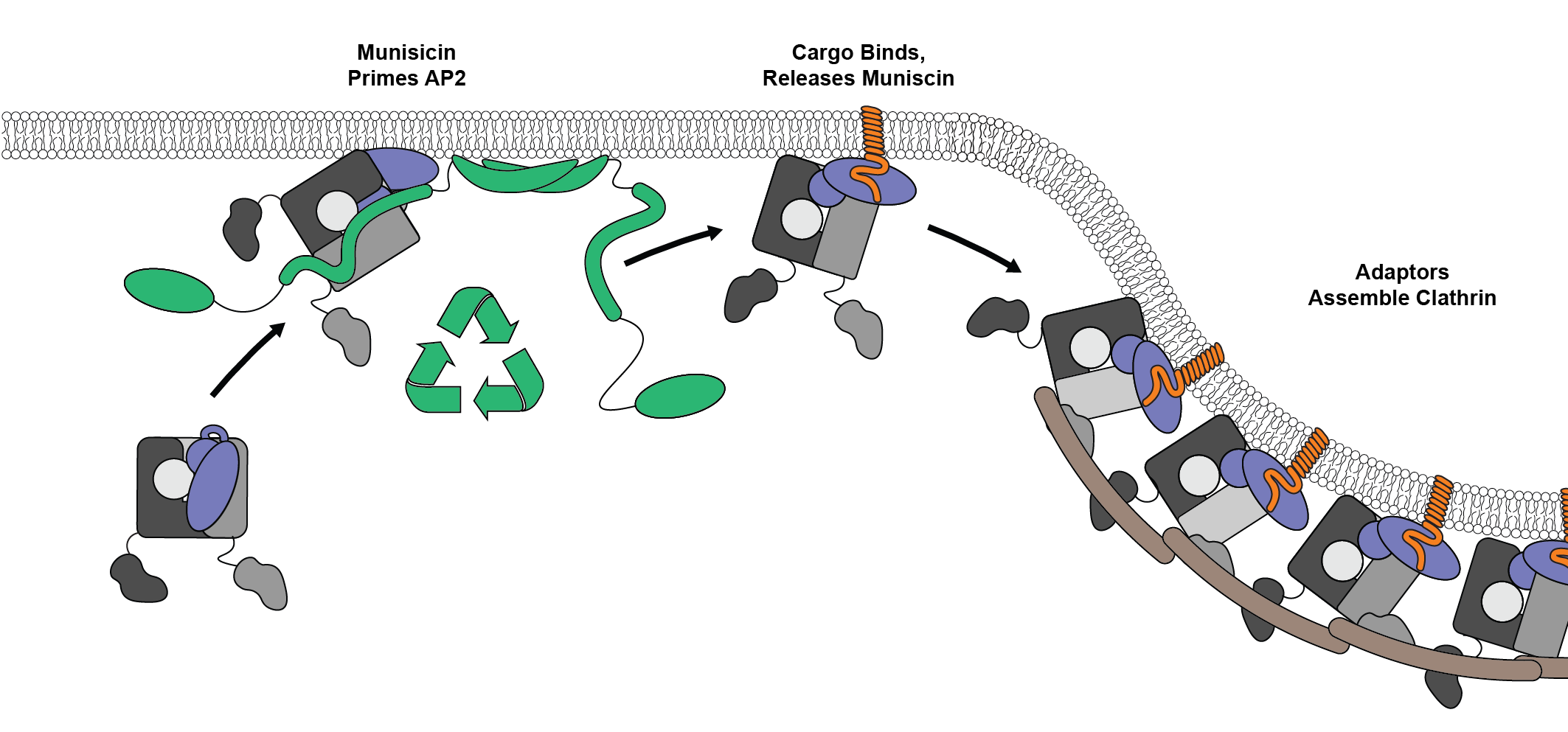Protein checkpoints enable precision in cells’ intake of molecules
Every cell in your body relies on endocytosis — the intake of external molecules — to survive. However, how cells collect external cargo for this intake process is not well understood. Now, in a new paper published March 28 in Nature Structural and Molecular Biology, graduate student Edward Partlow and Dr. Gunther Hollopeter, assistant professor in the Department of Molecular Medicine, in collaboration with partners at the UNC Chapel Hill School of Medicine, have discovered that cells are much more precise in how they ingest substances, opening the door to new treatments for several diseases.

Previously, the Hollopeter group unveiled a molecular mechanism for endocytosis: A protein called muniscin binds to, and then acts as an on-switch for another protein called AP2, which then specifies where cargo will be internalized. Switched on, AP2 is drawn into bubble-like compartments, known as vesicles, and brings the cargo into the cell.
However, Partlow and Hollopeter realized their hypothesis was incomplete. Muniscins do not follow AP2 into the vesicle. “That means that AP2 must somehow remain ‘on’ without the muniscin,” says Partlow. Moreover, his initial biochemical experiments suggested that muniscin-bound AP2 was not actually in an ‘on’ state. “At this time, we only knew AP2 was in some new state,” says Partlow, “but didn’t know what that state was.”
To visualize exactly what was taking place at the cell membrane, Partlow and Hollopeter linked up with Kevin Cannon and Dr. Richard Baker at the UNC Chapel Hill School of Medicine, who specialize in cryogenic electron microscopy (cryo-EM) — a technique that uses electrons to capture images of things on a molecular scale.
What they found surprised them all: Muniscins induced a never-seen-before state in AP2 — something between off and on — a ‘primed’ state. When Partlow added cargo to the system, the AP2 ditched the muniscin and adopted a full ‘on’ state. “This new primed state of AP2 appears to be acting as a checkpoint to ensure only cargo-bound complexes are allowed to enter a vesicle,” says Hollopeter.

Partlow uses an analogy of people coming to see a show at theater. “The muniscin is like the theater staff, checking if patrons, or AP2, have a ‘ticket’ — that is, the cargo,” he says. “The muniscin binds the AP2 that doesn’t have a ticket — blocking the AP2 from entering ‘theater,’ or vesicle — but once AP2 gets a ticket, it’s allowed to enter.”
Once cargo binds AP2, the muniscin separates and is ready to begin again — recruiting new AP2 proteins to prepare for new extra-cellular cargo.
This finding upends a long-held assumption that cells only regulate exocytosis, the release of internal cargo, but have endocytosis running on zombie-like autopilot. “The discovery of primed AP2 is exciting because it means that endocytosis also has control levers,” says Hollopeter. These levers help the cell ensure that high-priority cargos are quickly and efficiently internalized.
The researchers hope to delve deeper into the consequences of priming in cells, and how other proteins might interact with primed AP2. As they continue this foundational work, it could lead to new therapies for conditions where endocytosis is hijacked — including cancer, high cholesterol and viral diseases. “We hope this newfound checkpoint could be exploited in the treatment of these diseases,” says Partlow.
Written by Lauren Cahoon Roberts




